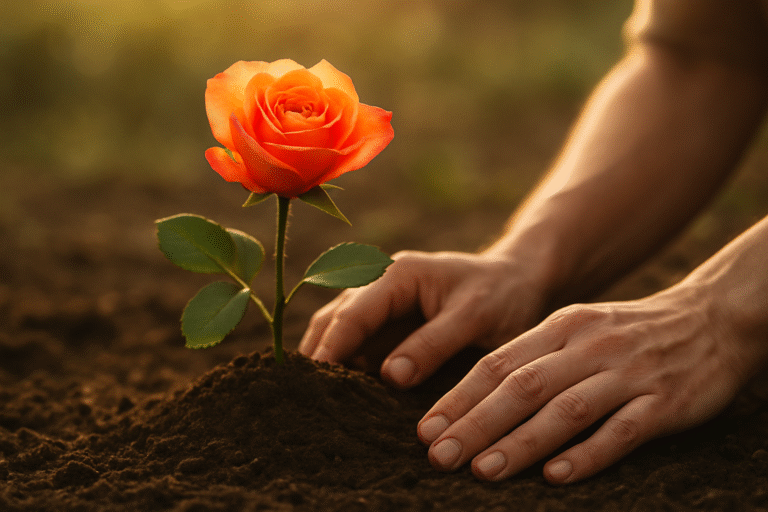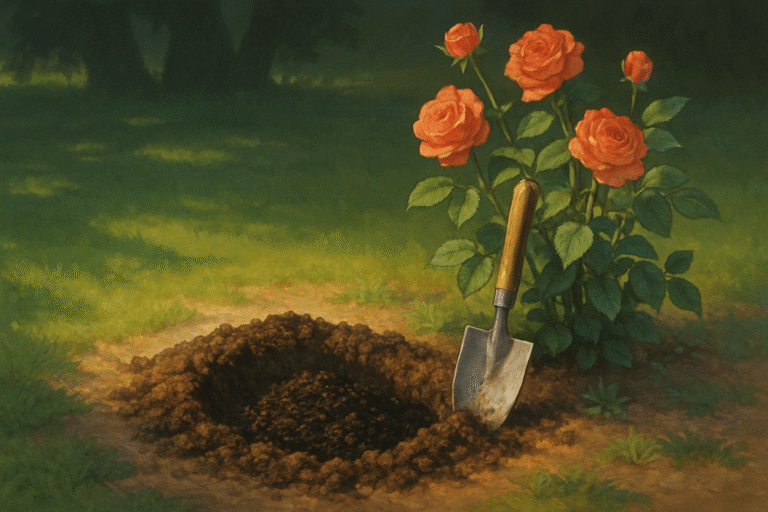
The True Reward of Growing Roses
There is a certain satisfaction, a quiet and profound joy, that comes from growing roses. I am not speaking merely of the visual appeal of a perfect bloom, although that is certainly part of it. The true reward is something deeper. It is the connection to a cycle, the hands-on process of nurturing something beautiful into existence. It is the scent that catches you on a warm June evening, a fragrance that no bottle could ever truly replicate. It is the simple act of cutting a few stems to bring inside, a piece of your garden’s soul brightening a room.
Many people are intimidated by roses. They see them as difficult, demanding plants reserved for gardeners with decades of experience. I believe this reputation is undeserved. Roses are not difficult; they are simply specific. They have clear needs, and if you meet those needs, they will reward you more generously than almost any other plant I know. The effort you expend in the beginning, in the planning and the planting, is an investment that pays dividends in color, fragrance, and personal fulfillment for years to come. It’s a partnership, really. You provide the right conditions, and the rose provides the magic.
That is the secret. It is all in the preparation.
Laying the Groundwork for a Glorious Garden

Before you ever pick up a spade, the fate of your rose garden is being decided. The choices you make about location and soil are the fundamental building blocks of future success. Rushing these initial steps is the most common mistake I see, and it is the one that leads to the most disappointment. A magnificent rose doesn’t just happen; it is grown from a foundation of thoughtful preparation. You are not just planting a bush; you are creating a home for it.
Finding the Perfect Sunny Spot
Roses are sun worshippers. This is not a preference; it is a fundamental requirement of their being. They need, at a minimum, four to six hours of direct sunlight every single day to produce the energy required for strong stems and abundant flowers. My personal opinion is that six hours should be your target.
Take a day to observe your garden. Watch where the sun falls in the morning, where it is at midday, and where it lingers in the afternoon. Look for an open area, away from the greedy roots and sprawling canopies of large trees. Planting a rose under a maple tree is a recipe for a constant, losing battle. The tree will steal the light from above and the moisture and nutrients from below. The rose will become a pale, spindly version of itself, reaching pathetically for a sliver of light.
This is the single most important decision you will make. Find that pocket of sunshine, that spot where the light is clean and direct, and you have won half the battle before you have even begun to dig.
Why a Rich Soil Foundation is Non-Negotiable
If sunlight is the energy, then soil is the pantry. It is where your rose will find all the sustenance it needs to grow, thrive, and defend itself against pests and diseases. Providing poor, compacted, or nutrient-deficient soil is like asking an athlete to perform on a diet of water and bread. The performance will be lackluster, and the athlete will be weak.
I am a firm believer in amending the soil. If you are replacing an old, tired rose bush, do not make the mistake of simply putting the new one in the same hole. That old soil is depleted. The previous tenant has used up the available nutrients. You must remove it. I recommend digging out a space at least a foot and a half deep and wide and replacing it entirely with fresh, high-quality garden soil mixed with well-rotted compost.
This isn’t just about feeding the plant for a week or two. You are building a long-term, life-sustaining environment. A deep, rich, and well-draining soil foundation encourages roots to grow deep and strong, anchoring the plant and making it far more resilient to drought and stress. Skimping on soil preparation is a mistake you will pay for all season long with a weak, unhappy plant. Give your rose the best start imaginable.
A Place for Every Rose
Thinking about placement is more than just finding a sunny spot; it is about design and understanding the plant’s habit. A rose is a structural element in your garden. Its form is just as meaningful as its flowers. Different types of roses play different roles, and using them correctly is what separates a simple collection of plants from a cohesive and stunning garden design.
Designing with Climbers and Ramblers
Climbing and rambling roses are, for me, the most dramatic and romantic of all. They are the plants that create fairy tales. They yearn to go vertical, to cover an ugly wall, to frame a doorway in blossoms, or to transform a simple pergola into a breathtaking floral tunnel. To plant a climber in the middle of a bed with nothing to support it is to misunderstand its very nature.
You must give them a structure to ascend. A sturdy trellis, a fence line, an archway—these are the stages upon which your climbing rose will perform. When you are positioning them, think about their future size. They need air to circulate around them to stay healthy, and they need physical space for their canes to spread. Placing them with care allows them to grow freely and achieve their spectacular potential. A well-placed climber is not just a plant; it is a piece of living architecture that will stop visitors in their tracks.
Using Smaller Roses for Impact
Not every rose needs to be a towering spectacle. The smaller varieties—the floribundas, the polyanthas, and the charming miniatures—play an equally vital part. I love using these smaller bushes as edging along a pathway, where their continuous blooms provide a soft and colorful border.
They also work beautifully in mixed beds, mingled with perennials. Their shrubby form provides structure when their herbaceous neighbors die back in winter, and their flowers can pick up colors from the surrounding plants, creating a unified and professional look. Placing a row of a smaller, repeat-blooming rose in front of a collection of taller, leggier plants is an old designer’s trick to hide their bare stems and create a lush, layered effect. These smaller roses are the workhorses of the garden, providing color and form from the ground up. They add a finished quality to any planting scheme.
The Art and Science of Planting
With the location chosen and the soil prepared, the moment of planting arrives. This is not a task to be rushed. I see it as a quiet ritual, a series of deliberate steps designed to give the new plant the best possible transition from its nursery pot to its permanent home. There is a science to it, yes, but there is also an art to handling the plant with care and setting it up for a long and healthy life.
The Planting Ritual for Lasting Success
First, dig a hole that is generously sized for the root ball, both in width and depth. Do not just dig a hole that is “big enough.” You want the surrounding earth to be loose and workable. Once the hole is dug, I always take a garden fork and loosen the soil at the very bottom. This breaks up any compaction and makes it easier for the first new roots to penetrate deep into the ground. At this stage, I add a handful of bone meal. This is a source of phosphorus that releases slowly, directly targeting the development of a robust root system.
The depth of planting is a detail that changes with your climate. In warmer regions, the bud union—the swollen knob where the rose variety was grafted onto the rootstock—can be slightly above the soil level. In colder climates like my own, I believe it is best to plant it deeper, with the bud union about an inch or two below the soil level. This provides extra insulation and protection against harsh winter freezes.
Gently place the rose into the prepared hole, fanning the roots out if it is a bare-root plant. Begin to backfill the hole with your enriched soil, filling it about halfway. Now, and this is a step many people skip, water it thoroughly. Fill the hole with water and let it soak in completely. This settles the soil around the lower roots, eliminating air pockets.
After the water has drained, finish refilling the hole. The final step is crucial for the plant’s survival. Mound the soil up and around the base of the plant, covering the lower canes by about eight inches. This protective mound of earth acts as a blanket, keeping the stems hydrated and safe from wind and sun until the root system has begun to establish itself and can draw up its own water. When you see new leaves beginning to unfurl, you know the plant is rooted. You can then gently wash or pull the excess soil away from the base. This careful process ensures your rose doesn’t just survive; it begins to thrive from the very first day.